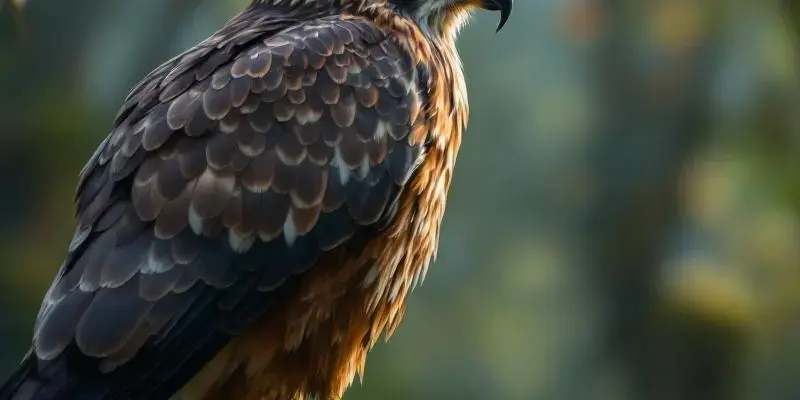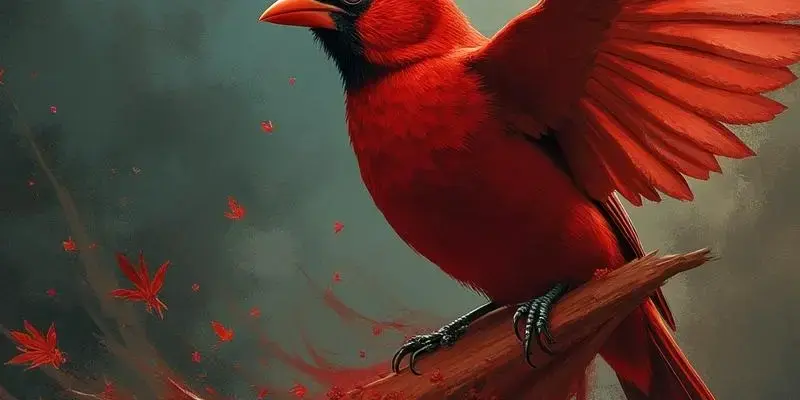Mantis spiritual meaning

The praying mantis, with its distinctive prayer-like posture and remarkable 180-degree head rotation, carries profound spiritual significance across diverse cultures as a symbol of patience, mindfulness, and divine connection. Throughout history, this extraordinary insect whose name literally translates to “prophet” in Greek has been revered as a spiritual messenger, offering insights about stillness, transformation, and heightened awareness to those who encounter it.
Key Takeaways
- The mantis’s name derives from Greek meaning “prophet or seer,” reflecting its spiritual significance
- Its distinctive prayer posture has inspired spiritual interpretations across numerous religions and cultures
- The mantis symbolizes the power of stillness and patience in spiritual practice
- Many traditions view mantis sightings as divine messages or omens
- The mantis represents transformation and intuitive wisdom in various spiritual beliefs
The Mystical World of the Praying Mantis: Nature’s Prophet
The natural world houses over 2,400 species of praying mantis, each carrying spiritual significance that transcends cultural boundaries. Their name itself—”mantis” from ancient Greek—literally means prophet or seer, pointing to humanity’s long-standing recognition of this insect’s spiritual essence.
What makes the mantis truly exceptional is its unique ability to rotate its head 180 degrees, a capability possessed by no other insect. This remarkable trait symbolizes perspective and heightened awareness in spiritual contexts. Most commonly encountered from mid-summer to mid-autumn in tropical and subtropical regions, the mantis has fascinated spiritual seekers for millennia.
The mantis’s distinctive prayer-like posture—front legs folded as if in devotion—has inspired deep spiritual interpretations across countless religions and cultures. This posture, combined with its patient hunting style, has cemented the mantis’s ancient connection to divination practices and prophecy dating back thousands of years.
Cultural Mantis Symbolism Across Civilizations
The spiritual significance of the mantis stretches across continents and spans millennia, with each culture adding its own interpretation to this enigmatic creature. In Ancient Greece, mantises played a central role in divination rituals, where they were regarded as messengers of divine insight and clarity.
Native American traditions hold particularly profound connections to the mantis, with some beliefs suggesting these insects “came before the creation of man and Earth.” The spiritual connection was so deep that certain tribes placed mantises in the mouths of the deceased to ease their passage into the next life, highlighting the mantis’s role as a spiritual guide between worlds.
African cultures view the mantis’s characteristic stillness as a form of divine meditation. A mantis sighting is considered a powerful omen of good fortune, similar to how ladybugs are viewed in other traditions. The mantis’s spiritual presence extends to Asian traditions as well, where Chinese culture embodies the mantis with martial strength, directly inspiring the precise movements of Praying Mantis Kung Fu.
In Japanese symbolism, the mantis frequently appears in Haiku poetry representing mindfulness and meditative focus. Celtic traditions interpret the mantis as symbolizing patience, wisdom, and the concept of “vengeful feminine” power—a recognition of the female mantis’s dominance in mating rituals.
Divine Messengers: Religious Interpretations
Christian tradition associates the mantis with piety and prayer, drawing obvious parallels to its characteristic prayer-like posture. Many Christians believe mantis sightings in the home signify that angels are watching over the household, offering divine protection and guidance.
Though not directly mentioned in biblical texts, spiritual guides frequently connect mantis energy to prayer practices and mindfulness. The mantis reminds us to pause, reflect, and connect with divine energy through stillness and intent.
Pagan traditions view the mantis as a powerful symbol of stillness, reflection, and divination. The insect’s ability to remain motionless for extended periods aligns perfectly with meditative practices central to many earth-based spiritual paths. Whether in Christian, pagan, or other spiritual frameworks, the mantis consistently symbolizes prayer, contemplation, and connection to higher realms.
The Sacred Power of Stillness and Patience
Almost universally, the mantis represents the power of stillness across spiritual traditions. Its hunting behavior teaches the quality of patience—sitting motionless for extended periods before striking with precision and purpose. This natural behavior pattern has become a spiritual metaphor for mindfulness and intentional action.
Spiritual guide Sarah Faith Gottesdiener offers this wisdom: “When you see a mantis, be mindful of smoke and mirrors.” This advice speaks to the mantis’s connection to truth-seeking and clear perception beyond illusions. Mantises teach us how to use stillness to achieve clarity in our own meditation and spiritual practices.
The mantis’s natural ability to blend into its surroundings symbolizes the spiritual power of mindful observation without interference. Like the spiritual lessons of beetles, the mantis demonstrates how to exist in perfect harmony with its environment while maintaining vigilant awareness. Its patient hunting strategy reminds us that timing is everything—both in nature and in spiritual growth.
Transformation and Intuitive Wisdom
The mantis life cycle progression from egg to nymph to adult symbolizes transformation and spiritual evolution. This metamorphosis mirrors our own spiritual journeys of growth, change, and enlightenment. In various spiritual traditions, mantises symbolize psychic abilities and connection to intuitive knowledge beyond ordinary perception.
The mantis represents cunning skills in hunting and razor-like precision in decision-making. This precision extends to spiritual discernment—knowing exactly when to act and when to remain still. The mantis facilitates connection to unseen realms and ancient healing arts through its embodiment of perfect stillness and awareness.
Female mantis behavior during mating—sometimes consuming the male partner—reflects themes of relational dynamics and feminine empowerment. This aspect of mantis symbolism speaks to the sacred feminine energy, sacrifice, and the natural cycles of creation and destruction that govern all life.
Like the grasshopper’s spiritual message of taking leaps of faith, the mantis offers its own unique wisdom about transformation through stillness rather than movement. Both insects, though related, provide complementary spiritual lessons about different approaches to personal evolution.
When the Mantis Appears: Practical Spiritual Guidance
The praying mantis typically shows up when it’s time to take your spiritual or mindfulness practices deeper. Its presence serves as a divine invitation to explore meditation, prayer, or contemplative practices with renewed dedication. When seeking patience in challenging situations, spiritual guides recommend: “surrender the goal in prayer”—a lesson perfectly embodied by the waiting mantis.
Important advice from mantis wisdom: Do not rush your next actions or speak of your visions too soon. The mantis teaches the power of holding sacred space for transformation before making your move. Mantis sightings serve as a reminder to slow down and enjoy each moment in our fast-paced world, bringing attention to the present rather than rushing toward the future.
Spiritual practices associated with the mantis include opportunities to call upon this insect guide to help direct you into a state of mindful being. Creating a quiet meditation space, practicing stillness, and cultivating patience are all ways to honor the mantis energy when it appears in your life.
The Science Behind the Spirituality
Understanding the biological reality of the mantis enhances appreciation for its spiritual symbolism. Female mantises reach up to 4 inches long while males remain smaller, a physical manifestation of the feminine power symbolism prevalent in mantis spirituality. Their average lifespan of 6-12 months symbolizes the importance of presence and living fully within limited time.
As strict carnivores eating only live prey, mantises embody focus and intentionality in their actions. Their hunting requires complete presence—a spiritual lesson about the value of bringing our full attention to each moment. The mantis’s varied coloration—from green camouflage to brown varieties and the stunning pinkish-white Orchid Mantis—demonstrates adaptation and the ability to harmonize with different environments.
The mantis’s compound eyes provide nearly 360-degree vision, representing expanded awareness and perception beyond the ordinary. This biological feature perfectly complements the mantis’s spiritual association with prophecy and heightened intuition. By appreciating these scientific aspects of mantis biology, we gain deeper insight into why cultures worldwide have recognized this remarkable insect as a spiritual teacher and guide.
The praying mantis holds deep spiritual significance across diverse cultures as a symbol of patience, mindfulness, and divine connection. Its name derives from Greek meaning “prophet or seer,” reflecting its longstanding spiritual importance. The mantis’s prayer-like posture and ability to rotate its head 180 degrees have inspired spiritual interpretations throughout history. It’s seen as a messenger between worlds in Native American traditions, while Christians associate it with divine protection. The insect teaches the power of stillness and patience through its hunting behavior, representing transformation and intuitive wisdom in spiritual practices.
| Key Aspect | Spiritual Significance |
|---|---|
| Name Origin | “Prophet/seer” in Greek, signifying divine connection |
| Prayer Posture | Symbolizes devotion, mindfulness, and spiritual practice |
| Cultural Views | Revered across Greek, Native American, African, Asian traditions |
| Primary Lessons | Patience, stillness, transformation, and heightened awareness |
| Spiritual Message | Divine invitation to deepen meditation and mindfulness practices |














